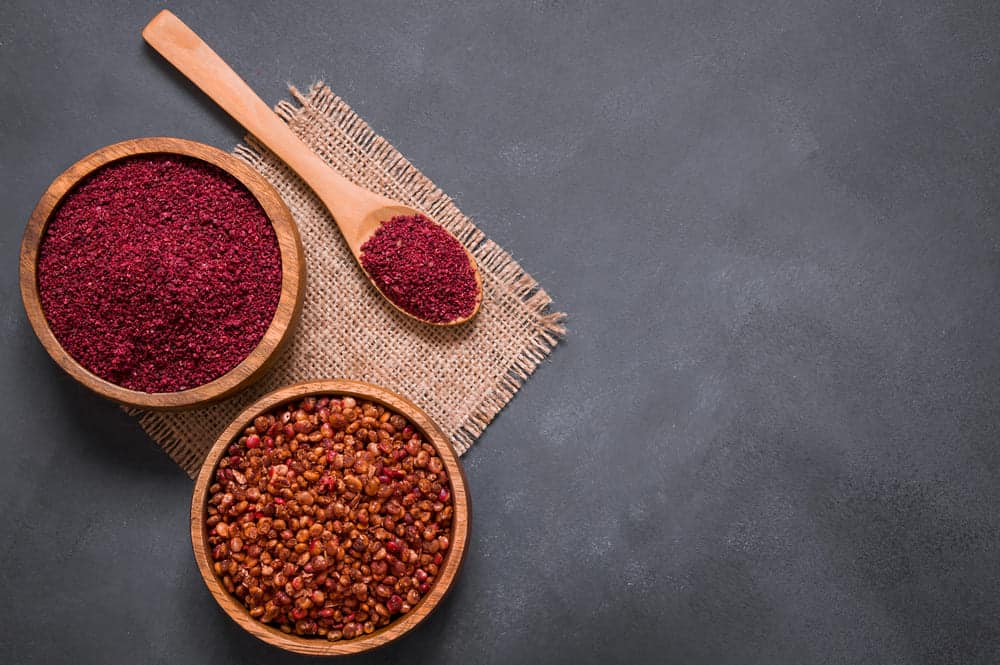
Our meals are nothing without the right spices but the spices vary for every recipe and cuisine. For instance, the Indian and Middle Eastern cuisines are incomplete without sumac but it’s hard to find in other areas of the world.
That being said, if you are making a Middle Eastern recipe but don’t have sumac, we have the sumac substitutes for cooking!
Sumac Substitute For Cooking
Sumac is known to be the trademark spice of the Middle East and is known for the citrusy tart flavors and has the deep red color. Sure, it’s not the household spice in everyone’s kitchen but this is an extremely exotic and unique spice that is popular for healthy features and bold taste.
Sumac dates back to the Roman era but even the Greek people used it for medicinal purposes. Sumac is an extremely versatile ingredient that is used in meats, veggies, and delicate desserts to add a fine flavor.
For the most part, people use sumac for the grilled meat and for complementing the fresh veggies. Sumac has a combination of lemon tartness but there is a slight fruity profile that perfectly balances the acidity. As far as appearance is concerned, sumac is available in the coarse grind form instead of fine powder. In case you are wondering about the flavor, it’s sour and acidic.
1) Lemon Juice
We have already mentioned that sumac has the tartness of the lemon which means lemon juice is an incredible substitute for sumac. The lemon juice can easily replace sumac if you have to make grilled kofta kebabs. However, the drill is to use the fresh lemon juice (you can squeeze it out while mixing up other ingredients in the mince or meat). Also, if you do use lemon juice as a substitute, be mindful of how much lemon juice you use because too much can damage the flavor of your recipe.
2) Lemon Pepper Seasoning
If you don’t have lemon juice, you can also choose lemon pepper seasoning to add the ultimate tartness and spice to the recipe. The lemon pepper seasoning is the combination of cracked black pepper and dried out lemon zest. This seasoning has balanced and complementing flavors that can make up for the acidity of sumac. In addition, lemon pepper seasoning can add sourness to the dishes without compromising on the authenticity of the flavor and taste.
3) Amchoor
If you are from the Middle East or Asia, you would be well aware of amchoor and it’s actually easily available. Amchoor can provide the citrus flavor to your recipes, and if you don’t know, amchoor is the mango powder (it is available in dried form). It can replace sumac while you are cooking chicken or fish since it delivers an apt level of sourness.
4) Za’atar
Za’atar is a well-known spice blend, and if you are a fan of Middle Eastern cuisine, you would have it already in your pantry. As we have already mentioned that it’s a spice blend, sumac is the most dominant ingredient which means it can replicate the same sourness, flavor, and aroma.
In addition, you can add a pinch of sesame seeds and salt to this spice blend to ensure the dish turns out full of flavor and taste. It’s safe to say that Za’atar can take the recipe to a different level (positively, of course).
5) Tamarind
If you want to add sourness to the recipe, you can use tamarind which doesn’t only add the sour notes but there are slight undertones of sweetness (you will love this balance). Tamarind can easily replace sumac in vegetables and meat recipes and it’s extremely easy to buy, it’s a win-win thing. You can use tamarind in the paste and dried pods. However, it’s no secret that tamarind has a concentrated flavor which means you should add it in low quantity.
6) Vinegar
We are pretty sure that everyone has vinegar in their pantry and it’s your last option if you cannot sumac or don’t want to try other substitutes. For instance, if you are cooking something and sumac is needed to add the sour flavor, you can opt for vinegar. Moreover, you must be mindful of how much vinegar you use because too much can impact the recipe’s flavor.